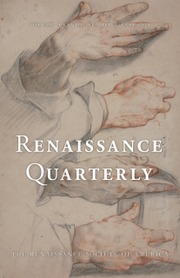In this important exposé of the Master of the Revels in Tudor and Stuart drama, Richard Dutton articulates topics we are all too familiar with: censorship and the regulation of words. It is easy to draw parallels today with the issues that come to light regarding the Office of the Masters of the Revels. At the onset of Dutton’s meticulously researched text, the reader is provided with “A Brief History of Early Modern Theatrical Censorship and Control.” In doing so, the author contextualizes the power of the stage in Elizabethan and Jacobean sociopolitical spheres. Following an examination of the nuances of licensure and its pitfalls in his introduction, Dutton considers the roles of the Masters of the Revels and raises questions about their authority. After placing his study within the context of notable early modern scholarship on censorship, Dutton reiterates his own position on the Masters of the Revels as “enablers” rather than a state-controlled faction (11).
In his first chapter, Dutton highlights a system of control by the Privy Council under Edward VI and Queen Mary, and the implications of an updated Act for the Punishment of Vagabonds under Elizabeth I in 1574. As a result, for players and stage plays, the place of performance shifted outside of the liberties of the city. However, the prosperity of the Elizabethan stage exposed a need for regulation. Here is where Edmund Tilney enters the scene.
The ensuing chapters outline Tilney’s role as Master of the Revels. Through this esteemed position, he licensed public drama and removed controversial matter, but did not suppress an exchange of views. Dutton notes the disappearance of Tilney from records through the mid-1590s. What follows is an engaging revelation of the timing of Tilney’s disappearance and the disintegration of the Lord Strange’s Men and the Queen’s Men. Dutton provokes important questions through this study: How does Tilney use his authority? Who benefits? Who receives special commission to license? What is Tilney’s profit?
Another section of Mastering the Revels focuses on censorship. One of the texts discussed under Tilney’s charge is William Shakespeare’s Richard II. Queen Elizabeth I’s issue with the deposition scene after it was staged in 1595, and recognition of herself as Richard, are familiar to scholars of Shakespeare and the English Renaissance. However, through his comparison of the scene in Q1 with the same scene in Q4, Dutton importantly raises the question of “who censored it and when?” (128). Whether it was Tilney or not remains unclear, for we do not know who licensed the play in the first place.
In later chapters, Dutton addresses the transition of Master of Revels from Tilney to Sir George Buc in 1610 upon the former’s death. Sir John Astley served in this reputable role briefly from 1622 to 1623. He was followed by Sir Henry Herbert, Master of the Revels from 1623 to 1642. The conclusion of Herbert’s tenure coincided with the closing of the playhouses as civil war broke out in England.
On our current world stage, the idea of censorship through words and ideas (and even books!) has become frequent in our everyday discourse. As such, Richard Dutton’s Mastering the Revels: The Regulation and Censorship of Early Modern Drama has become even more relevant in the years since it was first published. In conclusion, the range and depth of this study—loaded with literary and historical tools—provides vital knowledge for any pre-Restoration scholar and aficionado of the theater.



